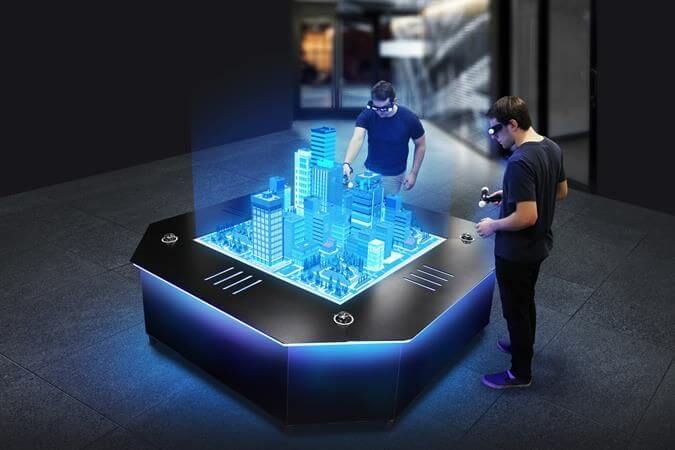Touchable hologram technology represents a significant stride in the evolution of human-computer interaction, moving beyond the traditional limitations of visual-only holographic displays. Recent breakthroughs have enabled users to physically interact with projected 3D images, paving the way for more immersive and intuitive digital experiences. This emerging field blends advanced display technologies with haptic feedback mechanisms, creating a realistic and engaging user experience.
One of the key challenges in developing touchable holograms has been overcoming the limitations of traditional volumetric displays. These displays typically rely on rigid, rapidly oscillating surfaces to project 3D images. However, these surfaces are fragile and can be damaged by physical contact, posing a safety risk to users. To address this, researchers have explored alternative approaches, such as using elastic materials for the display surface. A team led by Dr. Elodie Bouzbib at the Public University of Navarra introduced a system using elastic strips, allowing users to safely touch and manipulate the projections without causing damage or injury. This system incorporates image correction technology to ensure that the visuals remain stable and clear even when touched.
Another approach to creating touchable holograms involves the use of "aerohaptics." Developed by Ravinder Dahiya and his team at the University of Glasgow, this technique combines a pseudo-holographic display with precisely controlled jets of air to create the sensation of touch. The system uses a Leap Motion sensor to track the user's hand movements and directs airflow to their palms and fingertips, simulating the feeling of interacting with a virtual object. For example, the system can mimic the experience of bouncing a basketball, with the air jets providing tactile feedback that corresponds to the ball's contact, speed, and pressure.
The potential applications of touchable hologram technology span various industries. In education, students could interact with 3D models of molecules or ancient artifacts, enhancing their understanding and engagement. Museums could offer visitors interactive exhibits that allow them to explore historical objects without the need for gloves or controllers. In remote collaboration, colleagues could meet as virtual avatars and feel each other's handshakes, creating a more immersive and personal experience.
In the medical field, touchable holograms could revolutionize surgical training and remote procedures. Surgeons could practice complex operations in a virtual environment, receiving tactile feedback that simulates the feel of real tissue and instruments. During remote surgeries, a skilled surgeon could guide a robotic arm, with the haptic feedback transmitted to their hands, allowing them to perform delicate procedures with precision.
Despite the significant progress, touchable hologram technology is still in its early stages of development. Several challenges remain, including improving the resolution and stability of holographic images, enhancing the realism of haptic feedback, and reducing the cost and complexity of the systems. As technology advances, integrating artificial intelligence and machine learning could further enhance the capabilities of touchable holograms. AI algorithms could optimize image rendering, predict user interactions, and personalize the haptic feedback, creating a more seamless and intuitive user experience.
The development of touchable hologram technology represents a major leap forward in mixed reality and human-computer interaction. By enabling users to physically interact with 3D images, these technologies have the potential to transform various industries, from education and entertainment to healthcare and remote collaboration. While challenges remain, ongoing research and development efforts are paving the way for a future where touchable holograms become an integral part of our daily lives, bridging the gap between the physical and digital worlds. The CHI 2025 Conference in Japan will feature the presentation of the "FlexiVol" system, marking a significant milestone in this rapidly evolving field.

















